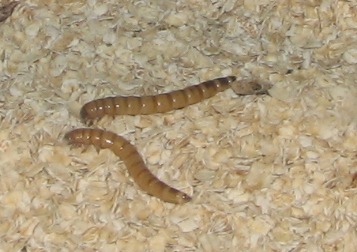- Author:
- Yufang Huang
- Subject:
- Science
- Material Type:
- Lesson Plan
- Level:
- Upper Elementary
- Tags:
- License:
- Creative Commons Attribution Non-Commercial
- Language:
- English
- Media Formats:
- Text/HTML
Education Standards
https://www.adobe.com/express/feature/design/add-images
https://www.generationgenius.com/structure-and-function-of-living-things/
https://www.searchenginewatch.com/2016/07/12/how-to-find-copyright-free-images-with-google-image-search-and-other-resources/
Using Adobe Spark Pages
4.1.1 Animal Structure & Function

Overview
This is a fourth-grade student science project tied to SEEd standard 4.1.1 In this project students demonstrate the understand of how the structure of an animal or plant supports their function.
This project is designed to support students in engaging in science investigations by combining their personal life with a school project. Students will use the photo they took to create an Adobe Spark Video and label the structure and function of the animal or plant.
Students will share the Adobe Spark video link in the Canvas to share with the class
Summary
This is a 4th-grade science lesson and to be used when teaching standard 4.1.1: the animal's structure and function. Students will identify some animals' structure and function at the end of the lesson and students will be able to create their own presentation about animals' structure and function to share with the class.
Time Frame: 2 45-Minute Class Periods
Format: Face-to-Face
Author: Ivonne Huang
Photo credit: Ltshears, Public domain, via Wikimedia Commons
Background for Teachers
- To teach this lesson, teacher will need to understanding what is structure. Some structures are internal, like the lungs, brain, or heart. Other structures are external, like skin, eyes, and claws. Some structures are unique, like the long neck of a giraffe. Other structures are more common, like a heart.
- You will need to be familiar with Adobe Spark Page and how to search for images and give appropriate credit for images that can be used without violating copyright law. (Creative Commons, Free Adobe Spark Images, Google Image Search, etc.)
Step 1 - Goals and Outcomes
Utah Core Standard for Science 4.1.1
- Construct an explanation from the evidence that plants and animals have internal and external structures and functions to support survival, growth, behavior, and reproduction. Emphasize how structures support an organism's survival in its environment and how internal and external structures of plants and animals vary within the same and across multiple Utah environments. Examples of structures could include thorns on steam to prevent predation or gills on a fish to allow it to breathe underwater. (LS1. A)
Learning Intentions:
- Students will understand plants or animals have internal and external structures to support different functions.
Success Criteria:
- Students will be able to participate in a discussion about different animals' structures and it's function.
- Students will be able to participate in a discussion about different plants' structures and it's function.
- Students will be able to name the plants and animals from Utah and describe it's structure and functions.
Step 2 - Planning Instruction
Student Background Knowledge
- Prior to this lesson, students will need to have an understanding of Adobe Spark Page and how to search for images and give appropriate credit for images that can be used without violating copyright law. (Creative Commons, Free Adobe Spark Images, Google Image Search, etc.)
*See resources attached to Section 2 of this lesson plan.
Strategies for Diverse Learners
After a brief lesson on how to use Adobe Spark and how to research for images. Pair up with students and let students practice Google image search.
Step 3 - Instruction
Remind students that the class has been talking and exploring different animals' external/internal structures to support its' different functions.
A week before the Adobe Spark Video project, students will need to take a photo of their pet or a photo of any animals or plants they took on their own device. After taking the photo, students will need to put their photo into their Google drive. Students should only gather their own photos for the project, not images from the Internet.
On the day of the Adobe Spark Video project, ask students to share photos of animals or plants they took with the class through the Canvas discussion post. Students need to comment on 3 students' photos. In the comment, students need to post on what structure and function do they see.
Introduce students to the project: For your project, we will use Adobe Spark Video to create a short presentation to share with the class in Canvas. Students will work as pairs to create an individual Adobe Spark Video about the animal or plants. Give students 45 min. to create the video and record their voice in the video. Since students have all taken their own photos, demonstrate how to add their name to the project for photo credit. Explain that it is always important to make sure it is okay to use images and give credit to who created the image you want to use.
Students will post their project link into the Canvas discussion to share with the whole class. Students need to comment on 3 students and add 1 more structure and function they see that was not mentioned in the video.
Step 4 - Assessments
Student learning will be assessed using a rubric to grade the final project. Observations during the lesson will also be used to gauge student understanding of the content vs. their technological ability to demonstrate what they know.
| Criteria | Mastered | Proficient | Approaching | Below |
| Students can identify an animal's external structure and function | 4 | 3 | 2 | 1 |
| Students can identify an animal's internal structure and function | 4 | 3 | 2 | 1 |
| Students can record Chinese to explain each slide | 4 | 3 | 2 | 1 |
| Students can type and use the correct Chinese characters in each slide. | 4 | 3 | 2 | 1 |
| Total |